Nails – Friday Pop Quiz – 4/8
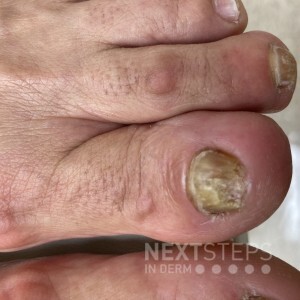 A 92-year-old female patient presents with complaints regarding her nails. She states they often crumble, and have been yellowish in color for years. Her toenails are so thickened that it is difficult to trim them. She is otherwise asymptomatic and has no fingernail involvement. What is the most common cause of this patient's condition?
A. Tinea manuum
B. Tinea pedis
C. Inflammatory d …
A 92-year-old female patient presents with complaints regarding her nails. She states they often crumble, and have been yellowish in color for years. Her toenails are so thickened that it is difficult to trim them. She is otherwise asymptomatic and has no fingernail involvement. What is the most common cause of this patient's condition?
A. Tinea manuum
B. Tinea pedis
C. Inflammatory d …
 A 92-year-old female patient presents with complaints regarding her nails. She states they often crumble, and have been yellowish in color for years. Her toenails are so thickened that it is difficult to trim them. She is otherwise asymptomatic and has no fingernail involvement. What is the most common cause of this patient's condition?
A. Tinea manuum
B. Tinea pedis
C. Inflammatory d …
A 92-year-old female patient presents with complaints regarding her nails. She states they often crumble, and have been yellowish in color for years. Her toenails are so thickened that it is difficult to trim them. She is otherwise asymptomatic and has no fingernail involvement. What is the most common cause of this patient's condition?
A. Tinea manuum
B. Tinea pedis
C. Inflammatory d … 

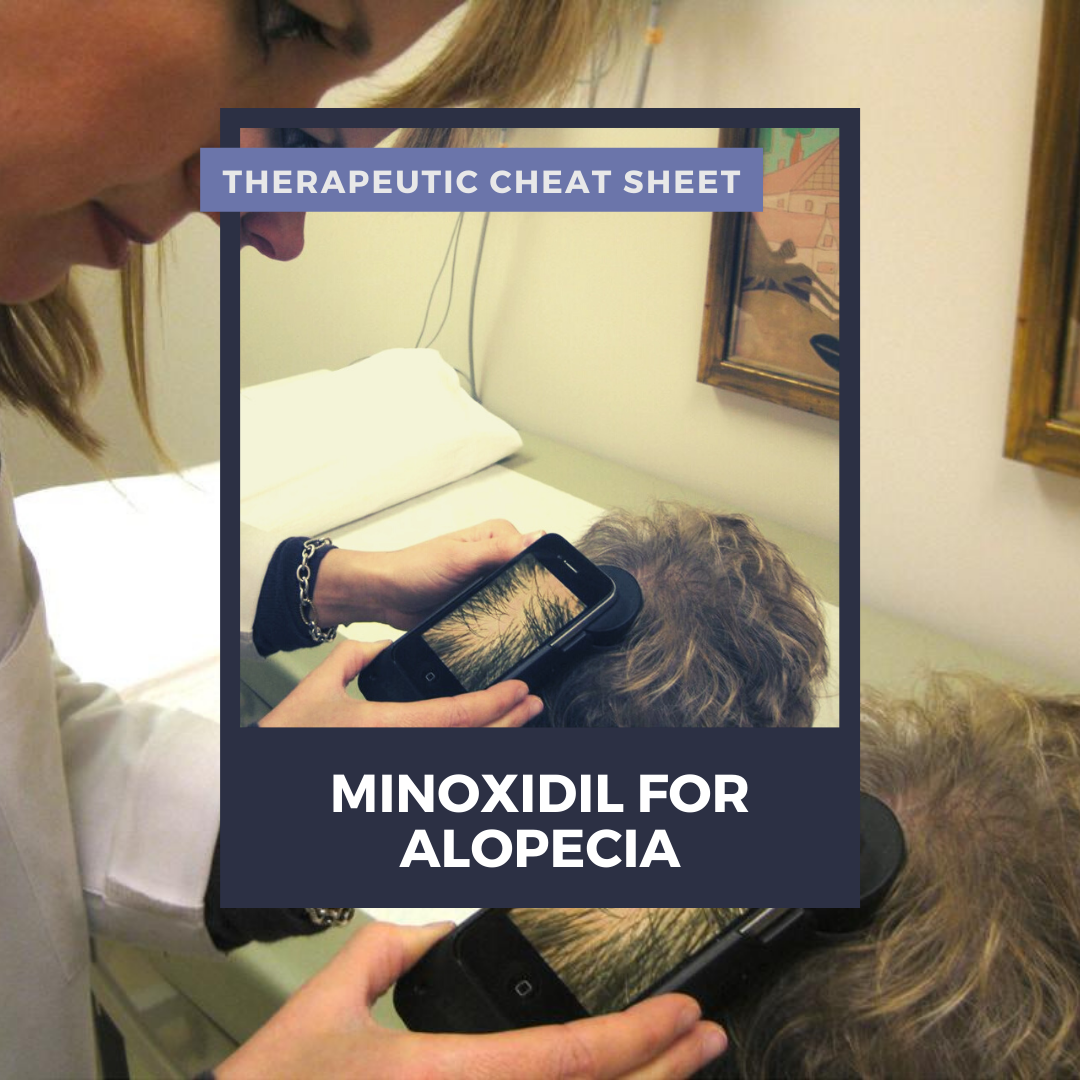 Various forms of alopecia affect millions of individuals worldwide and its prevalence appears to be increasing.1 Hair loss often leads to significant distress and negatively impacts quality of life. Treatment often requires a multimodal approach, and patient satisfaction is highly variable. Dermatologists have limited tools in their treatment armamentarium and may often resort to off-label use of …
Various forms of alopecia affect millions of individuals worldwide and its prevalence appears to be increasing.1 Hair loss often leads to significant distress and negatively impacts quality of life. Treatment often requires a multimodal approach, and patient satisfaction is highly variable. Dermatologists have limited tools in their treatment armamentarium and may often resort to off-label use of … 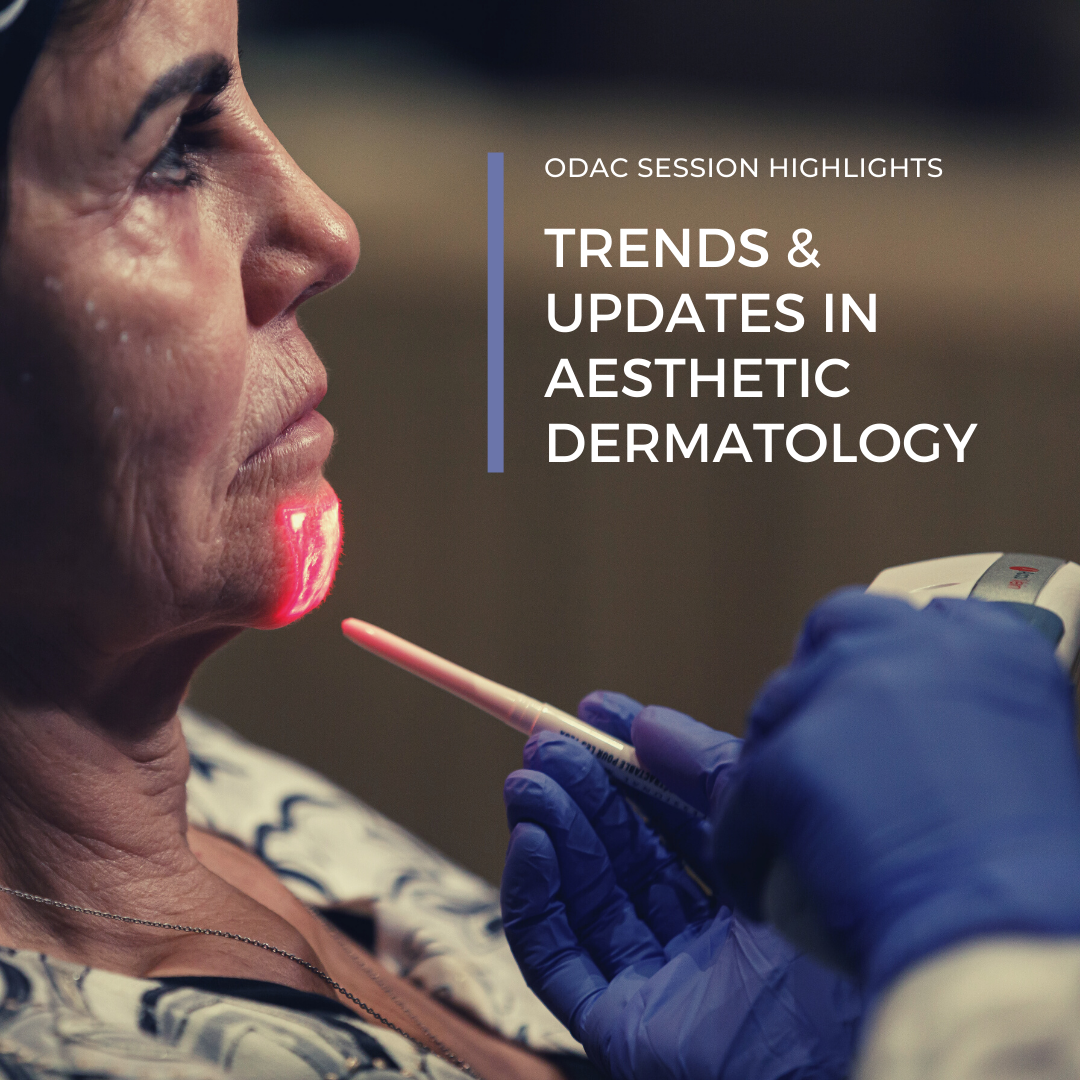 Updates on Technique
Can we deliver the same results safely with a cannula as we historically have with needles?
The question whether a cannula or a needle should be chosen for dermal filler injections does not have a straightforward answer. Injection techniques and location, as well as cannulas and needles have to be used in a patient specific manner. Over the last 5 years, practitioners have …
Updates on Technique
Can we deliver the same results safely with a cannula as we historically have with needles?
The question whether a cannula or a needle should be chosen for dermal filler injections does not have a straightforward answer. Injection techniques and location, as well as cannulas and needles have to be used in a patient specific manner. Over the last 5 years, practitioners have … 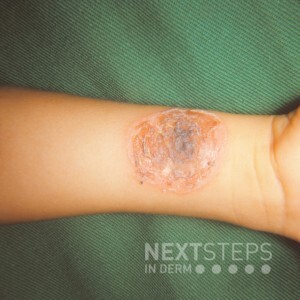 A father brings in his child who has a history of atopic dermatitis. He reports a one-week history of blisters on the extremities and states this looks different than his usual eczema. The child is well appearing and happily cooperative with your exam. What is the next step in management?
A. Scabies prep
B. Wound culture
C. Tzanck smear
D. Potassium hydroxide prep
E. Punch b …
A father brings in his child who has a history of atopic dermatitis. He reports a one-week history of blisters on the extremities and states this looks different than his usual eczema. The child is well appearing and happily cooperative with your exam. What is the next step in management?
A. Scabies prep
B. Wound culture
C. Tzanck smear
D. Potassium hydroxide prep
E. Punch b … 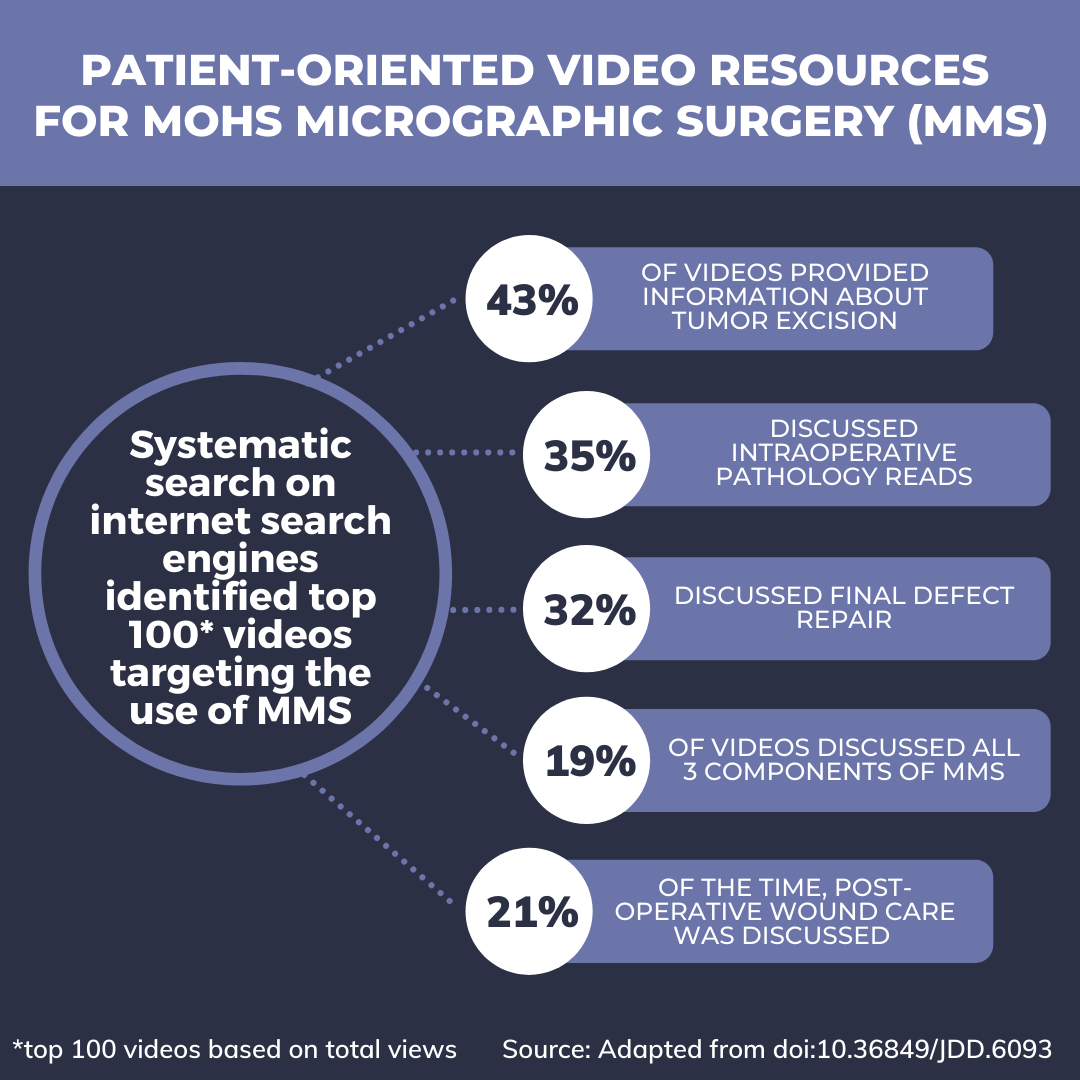 INTRODUCTION
Mohs micrographic surgery (MMS) is increasingly utilized for treatment of skin cancer, however the technique used is markedly different than other surgical modalities.1,2 Explaining MMS to patients is difficult, and anxiety following a skin cancer diagnosis likely leads many to seek out additional resources to supplement their understanding.3,4 It is unclear how accurate and comp …
INTRODUCTION
Mohs micrographic surgery (MMS) is increasingly utilized for treatment of skin cancer, however the technique used is markedly different than other surgical modalities.1,2 Explaining MMS to patients is difficult, and anxiety following a skin cancer diagnosis likely leads many to seek out additional resources to supplement their understanding.3,4 It is unclear how accurate and comp …